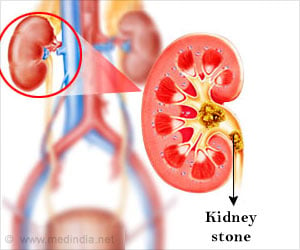Vaginal progesterone is effective in reducing preterm birth and neonatal morbidity and mortality in women with a mid-trimester sonographic short cervix.

- Vaginal progesterone reduces preterm birth in women with a mid-trimester short cervix
- Frequency of complications of prematurity can also be reduced with Vaginal progesterone
- Vaginal progesterone can also decrease the number of low birth weight babies
Globally, physicians have surveyed various studies to check if administering vaginal progesterone to women with a mid-trimester sonographic short cervix could reduce the rate of preterm birth or not.
Many of the studies published have given positive results, until a recent publication of a survey in February 2016.
Effectiveness of Vaginal Progesterone
At present, all physicians and scientists have combined the results of all the studies in an article and have published in the American Journal of Obstetrics & Gynecology. They found that when all the information that is available has been combined into an individual patient data meta-analysis, the results are clear.
The rate of preterm birth reduces with vaginal progesterone at <28, <30, <32, <34, <35, and <36 weeks and moreover, the frequency of complications of prematurity and the number of low birth weight babies who weigh less than 1500 grams can also be reduced.
The cost-effectiveness has also been looked into by the authors of this study. The results showed that the vaginal progesterone was found to be cost-effective when given to pregnant women in their mid-trimester. The strategy was estimated to save the U.S. healthcare system by $500 million every year.
The research team also reviewed the evidence of all these studies. The results showed that when this approach is implemented in clinical practice, it was found to reduce the rate of preterm birth in the "real world."
Roberto Romero, MD, DMedSci, Chief of the Perinatology Research Branch, NICHD/ NIH/ DHHS, and Kypros Nicolaides, MD, professor and head of Obstetrics and Gynecology, Kings College, London, and head of the Fetal Medicine Foundation commented, "The findings of our meta-analysis of individual patient data, which includes all available trials, should reassure clinicians and professional/scientific organizations that vaginal progesterone is efficacious and safe for reducing preterm birth and neonatal morbidity and mortality in women with a sonographic short cervix."
"Also, recent evidence assessing the implementation of universal cervical length screening in women with a singleton gestation and treatment with vaginal progesterone to those with a short cervix suggests that this intervention could contribute to a reduction in the rate of preterm birth and associated neonatal morbidity and mortality in the United States."
Preterm Birth
The normal gestation period is 40 weeks, but,when the baby is born before 37 weeks of pregnancy, it is called preterm birth. Babies who survive can have long-term health problems, including cerebral palsy, chronic lung disease, intellectual disabilities, hearing loss and blindness.
The reason to consider premature birth as a serious issue is that it is the leading cause of death in children under the age of five.
Based on gestational age, there are sub-categories of preterm birth:
- When the baby is born <28 weeks, it is extremely preterm
- Very preterm is when the baby is born between 28 to <32 weeks
- Moderate to late preterm when the baby is born within 32 to <37 weeks
The overall health, lifestyle habits of the mother before and during pregnancy has an influence on the baby. Smoking, alcohol, drugs, and physical inactivity may cause premature birth.
Source-Medindia















